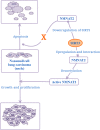Function of the SIRT3 mitochondrial deacetylase in cellular physiology, cancer, and neurodegenerative disease
- PMID: 27686535
- PMCID: PMC5242307
- DOI: 10.1111/acel.12538
Function of the SIRT3 mitochondrial deacetylase in cellular physiology, cancer, and neurodegenerative disease
Abstract
In mammals, seven members of the sirtuin protein family known as class III histone deacetylase have been identified for their characteristic features. These distinguished characteristics include the tissues where they are distributed or located, enzymatic activities, molecular functions, and involvement in diseases. Among the sirtuin members, SIRT3 has received much attention for its role in cancer genetics, aging, neurodegenerative disease, and stress resistance. SIRT3 controls energy demand during stress conditions such as fasting and exercise as well as metabolism through the deacetylation and acetylation of mitochondrial enzymes. SIRT3 is well known for its ability to eliminate reactive oxygen species and to prevent the development of cancerous cells or apoptosis. This review article provides a comprehensive review on numerous (noteworthy) molecular functions of SIRT3 and its effect on cancer cells and various diseases including Huntington's disease, amyotrophic lateral sclerosis, and Alzheimer's disease.
Keywords: SIRT3; Silent Information Regulator 2; aging; cancer; sirtuin.
© 2016 The Authors. Aging Cell published by the Anatomical Society and John Wiley & Sons Ltd.
Figures






References
-
- Accili D, Arden KC (2004) FoxOs at the crossroads of cellular metabolism, differentiation, and transformation. Cell 117, 421–426. - PubMed
-
- Alano CC, Ying W, Swanson RA (2004) Poly (ADP‐ribose) polymerase‐1‐mediated cell death in astrocytes requires NAD+ depletion and mitochondrial permeability transition. J. Biol. Chem. 279, 18895–18902. - PubMed
Publication types
MeSH terms
Substances
LinkOut - more resources
Full Text Sources
Other Literature Sources
Medical

